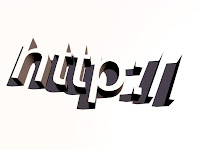 At the latest update it with the panda has been etched with most webmasters: unique content that the web site differs from other providers is more important and central. No one wants to because of duplicate content (ie content that can be found in several places on the Web in the same way) will be penalized in the rankings. With verification methods such as Copyscape to be duplicate content and trace copies to third-party sites. But what many do not know: often produces its own web site unintentionally duplicated web content. How this comes about and what are the canonical tag can do about it, here at a glance.
At the latest update it with the panda has been etched with most webmasters: unique content that the web site differs from other providers is more important and central. No one wants to because of duplicate content (ie content that can be found in several places on the Web in the same way) will be penalized in the rankings. With verification methods such as Copyscape to be duplicate content and trace copies to third-party sites. But what many do not know: often produces its own web site unintentionally duplicated web content. How this comes about and what are the canonical tag can do about it, here at a glance.Duplicate Content : The problem
Suppose you offer your users a friendly service and we also provide Web content for printing. For certain documents, lists, or lists the user can view before printing a print view. He sees how the document comes from the printer and how many pages it contains. Depending on the technical implementation of this print view, but sees not only the users the same content again. Also, the search engine crawler looks suddenly doubled. Duplicate content on same site - it is already in the world. And there are many other "mistake" by the double content is created.
Two of the most common variants are mentioned. Even if your website at the address http:// both www.domainname.com as well as at the URL http://domainname.com is to find all content are twofold. The same shall apply if site accessed via an http and an https connection. A list of many other kinds of duplicate content "producers" can be found here: information on Canonical Tags - Answers to Questions ! There is also described how the problem can be counteracted by relatively simple means of Canonical day.
Canonical Tag : The Solution
Because the major search engine providers from day one day have to deal with millions of duplicate content, they have considered in the spring of 2009, a countermeasure. Both Google and Yahoo! Search in the cases referred to plead for the use of a single HTML tag. This so-called Canonical tag identifies content that (for whatever reason) are duplicated and refers to that URL, which is regarded as the original. If the search engine crawler finds this characterization, so he knows full well that there is a duplicated content and can be specified for indexing prefer original page.
How the Canonical days
The canonical tag is set in the header of a URL and has the following form:
<link rel="canonical" href="http://mysite.com"/>
In the first half is thus marked as the Canonical tag and the second part of the web address under which the original can be found. The use is also recommended by the way, if the sides are not identical to one hundred percent, but have a high similarity.
And what the user webmaster from this? The first advantage is already simply that the risk of Ranking punishment is avoided. The search engine crawlers are usually kept in the Canonical tag instructions and make the desired prioritization. This is also already has a second advantage: the page content provider can those who are to be found as well pretend to own. He gives the crawlers were, a recommendation on the way: Do not take this, but the one web site to place too high up in the search results.
Resource on Article : SEO Basics: Canonical Tag & Duplicate Content
For more information about the canonical tag can be found also in the Google blog, for example here:
Determines your canonical Url
(http://googlewebmastercentral.blogspot.in/2009/02/specify-your-canonical.html)
Matt Cutts: SEO advice: url canonicalization
http://www.mattcutts.com/blog/seo-advice-url-canonicalization/
Also in the Webmaster Center Blog of Bing
(http://www.bing.com/community/site_blogs/b/webmaster/archive/2009/02/12/partnering-to-help-solve-duplicate-content-issues.aspx)
(http://googlewebmastercentral.blogspot.in/2009/02/specify-your-canonical.html)
Matt Cutts: SEO advice: url canonicalization
http://www.mattcutts.com/blog/seo-advice-url-canonicalization/
Also in the Webmaster Center Blog of Bing
(http://www.bing.com/community/site_blogs/b/webmaster/archive/2009/02/12/partnering-to-help-solve-duplicate-content-issues.aspx)

No comments:
Post a Comment